- Administrator
- Albums and Singles
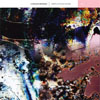 While perhaps known better for their lush, hazy guitar abstractions, the duo of Melissa Arpin-Duimstra and Scott Cortez are not afraid to push their sound even further into the reaches of the sonic galaxy, as this new reconstruction proves. Originally issued on a tiny Peruvian label in 2007, Chorus was a conscious attempt to remove guitars and instrumentation, and simply work with the sound of Arpin-Duimstra’s voice. For its reissue, the entire album is reworked yet again, using the tiniest of vocal fragments to weave a beautiful atmospheric tapestry of sound.
While perhaps known better for their lush, hazy guitar abstractions, the duo of Melissa Arpin-Duimstra and Scott Cortez are not afraid to push their sound even further into the reaches of the sonic galaxy, as this new reconstruction proves. Originally issued on a tiny Peruvian label in 2007, Chorus was a conscious attempt to remove guitars and instrumentation, and simply work with the sound of Arpin-Duimstra’s voice. For its reissue, the entire album is reworked yet again, using the tiniest of vocal fragments to weave a beautiful atmospheric tapestry of sound.
As expected from its development, the sound of Crwth is one that is more treated and distilled than its Chorus predecessor which, thankfully, is included as a free download, along with three additional reworked tracks that wouldn’t fit on the disc. The original material is closer in spirit to the band’s earlier work, though still full of cut and paste phonemes and what must be vocal snippets run through guitar effects pedals. While sounding very unlike their peers, there are still significant traces of a sound influenced by the likes of MBV, just with even less consideration for the conventional structures of pop music.
The new material allows Melissa’s natural voice to shine through at times, but the greater focus is on dismantling the syllables and breaths she provides into a variety of sounds, some which mimic traditional instruments, others which have no discernable origin. The opening "Dzai" leaves her gentle vocals out in the open, with little in the way of processing other than layering, which later surges into a sustained tone, with small phonemes morphing into a rhythmic click while others are processed into cello like low register swells of sound. "Vrhhu" allows the beautiful vocals to appear untreated, resembling a gentle, wordless lullaby as other bits of her voice are done up to sound like strings, providing a soft, gauzy bed for her angelic voice to rest upon. "Rhvr" also chooses to showcase the voice, with only the most subtle of reverberation and processed sonic punctuation to flesh out the sound.
In other cases, the voice is used simply as a starting point, and the outcome resembles something else entirely: "Glnkq" sounds much more like a complex synthesizer or laptop based composition, with its looped low frequency rhythmic pulse and shimmering pseudo-horn passages, and the cold minimalism of "Qlinglo," which channels distant strings and indefinable bassy frequencies. Even with little resemblance to its source material, few things other than the human voice can be capable of rendering such loneliness and despair that is captured on "Shemerr." While the palette that the sound is drawn from isn’t clear, the heavy emotions it conveys are rarely captured by anything other than the human voice.
When I first saw this listed on the upcoming release list from Line, I was a bit shocked. I knew the name sounded familiar, and a quick bit of research confirmed my instinct that Lovesliescrushing was a band associated more with the 1990s ethereal pop/gothic movement than anything else. Hell, they had releases on the Projekt label, definitely not something I would have seen as fitting in with this label’s preference for clinical and installation based compositions. However, the material here does fit in with the Line ethos, it just happens to have more of an organic core than many, such as myself, were expecting. The final product is a simply beautiful set of pieces that is consistent with the explorations in sound motive of electronic artists, but with a natural beauty and grace that few are able to mimic with their laptops and complex software.
samples:
Read More
- Administrator
- Albums and Singles
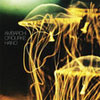 Recorded live in January of 2009, this collaboration is one that is more organic than a lot of what Oren Ambarchi and Jim O’Rourke are known for: no laptops here, the former only provides guitar, the latter piano. Meanwhile, Keiji Haino acts as the focus, providing his idiosyncratic vocals with flute and electronics, with the result sounding like ethnography from another planet, spiritual sounds that simply are extra terrestrial.
Recorded live in January of 2009, this collaboration is one that is more organic than a lot of what Oren Ambarchi and Jim O’Rourke are known for: no laptops here, the former only provides guitar, the latter piano. Meanwhile, Keiji Haino acts as the focus, providing his idiosyncratic vocals with flute and electronics, with the result sounding like ethnography from another planet, spiritual sounds that simply are extra terrestrial.
 
Sequenced as two long pieces with a short, single track bit of connective tissue, the entire work is a slow and mostly sparse affair:the first and last few minutes of the album are extremely close to pure silence.During the opening minutes of the first piece, only the most subtle of guitar amplifier noise and feedback appear, with the occasional scrape of guitar strings or muted tone to arise.Ambarchi keeps his guitar restrained, allowing it to feedback tentatively as O’Rourke plunks minimally on his piano.Eventually Haino’s voice comes in powerfully, oscillating between heavenly highs and demonic growls, often within the same few seconds.Between the vocals and the organic, but unnatural sounds, it feels like a ritual recording from another dimension, with Haino channeling spirits and demons from who knows where.
The short middle piece is pretty rudimentary in structure compared to the other two, with twinkling, music box piano and buzzing guitar static as Haino’s vocals are up front and commanding, with no restraint given, nor requested.While the surrounding two pieces are a combination of voice and instruments, here it is all about Haino’s distinctive voice.
The final section of the disc is more textural in nature, even with the abrasive electronic drone and flute that will send any nearby dogs running in a panic.The sound is tentative overall, with the found object percussive rattling giving a distinct texture before everything launching headlong into the second half.Haino cranks up a drum machine and Ambarchi gets more aggressive with his guitar.The primitive percussion via machine and higher intensity instrumentation again conjure images of medicine men and animal sacrifices, but with a distinctly alien edge, aided and abetted with Keiji Haino’s pained and processed vocals.Again, like the disc began, it ends near silence, with only the most minimal of piano notes and sparse vocal interjections before fading to nothing.
Taken as a whole, this three way collaboration resembles more of a thought out and deeply composed work more than a live collaboration, but that can be chalked up to the individuals included and their extremely well developed sense of improvisation.It actually sounds far removed from most of their individual work as well, so the entire proceedings are rather unique in their approach, creating a sonic world all its own.
samples:
Read More
- Administrator
- Albums and Singles
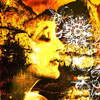 Philippe Petit’s recording career has always been characterized by his dual passions for reinvention and fruitful collaboration, but this audacious and imaginative album still managed to blindside me. A turntablist/laptoppist/self-described non-musician by trade, he has nevertheless managed to produce an ambitiously wild, weird, and noise-damaged avant-jazz opus with the aid of a bevy of talented pals (including a very unexpected Graham Massey on bass clarinet).
Philippe Petit’s recording career has always been characterized by his dual passions for reinvention and fruitful collaboration, but this audacious and imaginative album still managed to blindside me. A turntablist/laptoppist/self-described non-musician by trade, he has nevertheless managed to produce an ambitiously wild, weird, and noise-damaged avant-jazz opus with the aid of a bevy of talented pals (including a very unexpected Graham Massey on bass clarinet).
The vast majority of collaborations, while oft enjoyable, generally seem contaminated by the feeling that the final product is a compromise between the various participants’ visions (or worse, that no one wanted to squander their best material on something that was not exclusively their own). Albums that feature a large number of guest musicians, on the other hand, are an entirely different animal altogether. They seldom stand with an artist’s best material and most frequently are remembered for being uncharacteristically informal, an exploration of an experimental whim, or merely a document of a particularly fun recording session. Petit impressively avoids either of those fates here, however, as Silk-Screened is a clear career highlight and he absolutely could not have made it on his own: the whole is significantly greater than the sum of its parts.
Petit’s strain of jazz is certainly a unique one, as it falls very much in line with his stated “psycho-film-noir ambiance” aesthetic (yet without sounding much anything like his previous album Henry: The Iron Man). Some of album’s tracks sound like they’d fit very comfortably on the soundtrack to a classic old hard-boiled detective film, like the opening “Neon Woman,” which very effectively conjures up images of a trench coated man slipping out of a shadowy alley. Others, like the closing “Beyond The Mist,” betray a modern classical influence that suggests an artier/post-French Wave take on the noir genre.
The inspired re-envisionings that bookend Silk-Screened, however, are not nearly as compelling as more original three-song maelstrom that composes its center. “A Swirling Mix of Dystopia” is the wildest, most hard-hitting piece on the album, quickly escalating from vinyl hiss and a sad trumpet to a roiling squall of dense guitar abuse and electronics. Andy Diagram’s lyrically melancholy trumpeting remains in the foreground throughout the entire 11-minute running time, providing a very musical center for the rest of the song to erupt around. In fact, it even deceptively sounds like an entire horn section jumps in towards the end to supply hooky stabs (before it collapses into a howling free jazz frenzy, anyway).
“Blossoming Krokus” takes a much more pastoral, impressionist tone, as saxophonist Perceval Bellone delivers a lovely solo over a shimmering and haunting bed of strings, vibraphone, hissing, and clinking glass. “A Swirling Mix of Utopia” follows with a dark, disquieting Massey bass clarinet performance over an undulating fog of crackling field recordings, cymbal flourishes, and dissonantly twinkling guitars. It ultimately culminates into another infernal, howling crescendo (much like its similarly named predecessor), but it takes a very long time to get there and the build-up is deliciously tense. Unlike in “Dystopia” though, the apocalyptic outro is kept very low in the mix here, which is a very effective production move. Massey’s clarinet never cedes (or even shares) the foreground, but it becomes increasingly clear that there is some seriously cathartic entropy bubbling beneath it (yet somehow restrained).
Despite the fact that the cast of musicians does not remain at all consistent from song to song, the whole album feels like the work of a single, very talented ensemble. Petit clearly fed off of (and allowed himself to be challenged by) the energy and the ideas of his assembled friends, but it is always quite clear that he is the guiding force and that the raw material is ultimately sculpted into his focused vision. Musically, Philippe’s contributions are simultaneously subtle and massive. Center stage always belongs to the musicians and it is generally quite difficult to tell when a sound is originating from Petit and his turntable. However, once I actually analyzed how few musicians were involved in each song, it became clear that he was responsible for inconspicuously adding quite a staggering amount of layering, density, and power to the performances. The only real flaw with the album is that Petit and Ronan Benoit weren’t very imaginative with the drums, as they are a bit too tethered in traditional rock/post-rock beats and fills to fully befit the unhinged cacophony of “Utopia” and “Dystopia,” but that is a comparatively small quibble for such an inspired and surprising effort.
Samples:
Read More
- Administrator
- Albums and Singles
 After many years, the third instalment in Nurse With Wound’s classic Automating series of compilations has been unveiled. Digging up old nuggets from the last 26 years, this is another trip through the dustier, forgotten regions of Steven Stapleton’s back catalogue. Not quite as dazzling as the previous entries in the Automating series, this compilation still shows the strength of Nurse With Wound’s expansive approach to sound and most importantly, saves me a lot of leg work in tracking down old compilations.
After many years, the third instalment in Nurse With Wound’s classic Automating series of compilations has been unveiled. Digging up old nuggets from the last 26 years, this is another trip through the dustier, forgotten regions of Steven Stapleton’s back catalogue. Not quite as dazzling as the previous entries in the Automating series, this compilation still shows the strength of Nurse With Wound’s expansive approach to sound and most importantly, saves me a lot of leg work in tracking down old compilations.
The first two Automating compilations stick out as not only being great examples of compilations working as standalone albums but as two of the best releases put out under the Nurse With Wound name. Automating Volume Two was one of my first NWW purchases and it has remained one of my favourites consistently. As such, Automating Volume Three has a lot to live up to and although not as consistent as the earlier volumes, it performs admirably. “Antacid Cocamotive 93” mutates the '60s pop song “The Loco-Motion” into something stranger; the piece is highly reminiscent of The Residents’ Third Reich’n Roll album.
Elsewhere, “Beetle Crawls Across My Back” sees Nurse With Wound in rare melodic form; its eastern sounding strings subtly warped by Stapleton as what sounds like a didgeridoo joins in the jam. The song degenerates into a primal beat as Diana Rogerson delivers some truly unsettling vocals. It anchors the rest of the album around it, a definite centrepiece which is as good as any canonical Nurse With Wound piece. “Ubu Noir” is another version of Stapleton’s rendition of the traditional song “Black is the Colour of My True Love’s Hair” which is quite a departure from the extant versions on She and Me Fall Together in Free Death and Rat Tapes Volume One. Here it sounds like a broken Kraftwerk crawling out of the darkness of a nuclear apocalypse.
Automating Volume Three does fall down a little in places; “Transcribe and Dictate (Heavy Trad)” is a miniature sketch of “Two Shaves and a Shine” and considering there are already so many different versions of “Two Shaves and a Shine” out in the wild, the inclusion of this seems a little superfluous. Especially so considering it’s only half of Stapleton’s contribution to the Four Years in 30 Seconds compilation (the other half being the same piece in reverse). “Nosedive,” a remix of music by the metal band Cadaverous Condition, is an improvement on the source material but ultimately disappointing. A segment from Nurse With Wound’s remix of Sunn O)))’s 00 Void album would have been a better choice.
Given Stapleton’s love of contributing bits and bobs to whatever compilation is passing his way, there are still enough Nurse With Wound tracks out there to make up a fourth volume in this series (even discounting those collected on last years Flawed Existence vinyl box set). There are a few tracks from last year’s download only compilation More Automating that did not end up either on this CD or on Flawed Existence and it would be nice to see these obscurities release in a more satisfying format than MP3s.
samples:
Read More
- Administrator
- Albums and Singles
 The third solo album of original tunes for acoustic guitar and banjo reveals Glenn Jones as among the most likely to preserve the adventurous spirit of truly relentless guitar pioneers such as John Fahey and Robbie Basho. I habitually add review discs to my MP3 player and chuck the chaff later; but I'm keeping all these tracks.
The third solo album of original tunes for acoustic guitar and banjo reveals Glenn Jones as among the most likely to preserve the adventurous spirit of truly relentless guitar pioneers such as John Fahey and Robbie Basho. I habitually add review discs to my MP3 player and chuck the chaff later; but I'm keeping all these tracks.
There's little doubt those familiar with Jones as a co-founder of Cul de Sac will appreciate his restrained and subtle playing. He also has serious credibility as the man who brought Robbie Basho's live album Bonn Ist Supreme to our ears last year and who was entrusted with liner notes for several of Fahey's re-releases and for Red Cross, his final album. All well and good, and Jones obviously knows his stuff. Fear not, though, for the clarity of his compositions, his technical range, and his obvious wit, all lift him above dusty acedemia. Barbeque Bob in Fishtown is a recording which communicates skill and research, but never at the expense of joy, imagination and sheer love for music.
That's not to say that I go around humming these intriguing tunes. Well, "Snowdrops (For Robert Walser)" is whistleable, I imagine, and probably the most immeadiately pretty track here. The piece is perfect on so many levels. The title is a marvelous nod to the microscopic beauty of the Swiss author's poems and (very) short stories written on gum wrappers and tiny scraps of paper. I'm grateful for Jones's effective exhumation of this writer (known to Kafka) and will seek out Walser's work. "Snowdrops" probably features less notes and more space than any other on the album and the choice of National Radio-Tone Bendaway resonator guitar for this piece is so right. I also like that the track avoids using any faux-deranged musical passage as reference to Walser's admission into a mental hospital, where he effectively quit writing, saying "I'm not here to write, but to be mad."
That quote comes from the excellent booklet accompanying this release. The explanations of different guitars and tunings are generous and useful. The album is fine without them but the notes added to my enjoyment like excellent informative panels in an art gallery. The photos of (the actual rural blues guitarist) Barbeque Bob, of Robert Walser in a snow fall, of a still from the film Forbidden Games, and of Jones with guitarist Wendy Ritger are lovely. The larger pictures of Jones getting his nails done (got to protect your craft) are truthful and amusing. And those qualities of honesty and humor run in a subtle way throughout Barbeque Bob in Fishtown and lend the release an air of calmness, sincerity and fun. There are some more intense passages, such as his piece of Basho-from-memory "Redwood Ramble Misremembered" and his hearty Basho tribute "1337 Shattuck Avenue, Apartment D" but even there Jones never loses sight of the fact that he is playing this music for someone else to enjoy.
His approach is illustrated by "Keep It A Hundred Years," Jones' first piece for banjo which he says pinches "a snatch of melody" from "Jeux Interdits," the main theme from Forbidden Games (performed there by Narciso Yepes). Jones' "version" is a sweet and simple tune which, after playing it in concert in Europe, he discovered is considered a bit of a cliché there since it's a common piece for classical guitar beginners! Nevertheless, it appears here and is splendid. The track's title is taken from a piece of the film's dialogue.
Glenn Jones is someone I'd like to see play in concert and I will be seeking out his earlier work Against Which The Sea Continually Beats and his contribution to the Robbie Basho tribute disc We Are All One, In The Sun. There are some serious players doing solo guitar: Bishop, Rose, Newman, and others such as Ben Reynolds who put out a good solo guitar record this year: How The Day Earnt It's Night. In any company, Glenn Jones is as safe a pair of hands to which the preservation and exploration of this genre could ever hope to be trusted. I usually listen to music at the computer or through the MP3 player in my car. Doing that with this disc was alright but it was more genuinely transporting and immersing when heard on tiny headphones while I browsed a bookstore for hours yesterday. Curiously, this drew several critical glances from other browsers who I assumed were sociopaths pissed off by my contented reverie, until later realizing I'd missed several cellphone calls.
samples:
Read More
- Administrator
- Albums and Singles
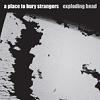 APTBS' debut album was a collection of different EPs and singles recorded over a number of sessions; as such it was a bit rough and ready in terms of recording quality. With this follow-up, they have done their songs more justice in the studio. They have further cemented their position as New York’s loudest band but they have moved beyond simple volume wars. Under the distortion and feedback are solid songs that are as infectious as the H1N1 but no way as unpleasant.
APTBS' debut album was a collection of different EPs and singles recorded over a number of sessions; as such it was a bit rough and ready in terms of recording quality. With this follow-up, they have done their songs more justice in the studio. They have further cemented their position as New York’s loudest band but they have moved beyond simple volume wars. Under the distortion and feedback are solid songs that are as infectious as the H1N1 but no way as unpleasant.
Initially, I feared that the band was going to be retreading old ground on Exploding Head. The guitar solo on “In Your Heart” bears a striking resemblance to the one on “Missing You” from their first album but my qualms were quickly allayed. The rest of the album represents a big jump in both quality and range for the group. The songs “Lost Feeling” and “Everything Always Goes Wrong” take the dark heart of Joy Division and transplant it into a still living body. Cold, uneasy guitar stabs punctuate stark rhythms as Oliver Ackermann’s fraught lyrics paint a picture of isolation. Of course, all of this is delivered with a generous dose of energy and the performances on this album are nothing short of electric. What stands out most on Exploding Head is the seriously blistering guitar work. With Ackermann’s expertise in effects pedals, it is little surprise that the sounds used here are quite unique. The fuzz that coats each guitar shriek on “Ego Death” feels like it can strip the paint off walls and force the fillings out of my teeth.
Far and away the best thing about this album is the immense closing track, “I Lived My Life to Stand in the Shadows of Your Heart.” It combines all the catchiness and intensity that permeates their music and condenses it into the definitive APTBS song. While it begins like any other song of theirs they keep upping their game during its duration. The pummelling beat and jet plane engine guitar brings the album to its climax before dropping the listeners down, exhausted and exhilarated. Even if every other song on this album was awful (they’re not), Exploding Head would still be one of my top albums of the year based on this track alone.
Unlike their earlier recordings, the production on this album fully captures how full and mighty A Place to Bury Strangers are in real life (all that is needed now to recreate the live experience at home is a strobe light and flicking the light switch on and off DOESN’T work). Exploding Head is a huge step up from their debut and leaves little doubt they will reap the benefits of the increased exposure their record on Mute can bring. Judging from these 10 songs, they have the goods and the talent to make the most of these circumstances.
samples:
Read More
- Administrator
- Albums and Singles
 The second collaboration between Eno and the guys from Cluster (originally released in 1978) fails to captivate in the same way as Cluster & Eno from the previous year did. Disparate in its approach to style, it feels like it is going to collapse at any moment and at times it falls flat. However, some genuinely superb moments bring After the Heat back from the brink and save it from being a poor cousin to the other work these artists have done together.
The second collaboration between Eno and the guys from Cluster (originally released in 1978) fails to captivate in the same way as Cluster & Eno from the previous year did. Disparate in its approach to style, it feels like it is going to collapse at any moment and at times it falls flat. However, some genuinely superb moments bring After the Heat back from the brink and save it from being a poor cousin to the other work these artists have done together.
After the Heat never quite gets going like the previous album that the trio put out. The innocuous—and frankly boring—piano piece “Luftschloss” sits in the middle of some good but not exactly stellar electronic pieces. Granted this could be ambient fatigue from someone experiencing this album 30 years after it was first released but it sounds like they are phoning it in for the first half of the album. The lacklustre pieces have little life to them and feel like unfinished sketches. It is not until “Old Land” that the album begins to work but, as far as what any of these artists are capable of, this piece remains average at best.
Despite this poor start, there are some stunning moments later on in the album such as “Base & Apex,” which, although a little dated sounding, still enthrals. The forward momentum is kept up with “Broken Head” which sees the trio pre-empt industrial and post-punk; a clanking rhythm and vocals that sound like a broken machine that has just become self-aware. “The Belldog,” echoing the style employed on Eno’s album Here Come the Warm Jets with its catchy pop hook sounds more like an Eno solo effort rather than a full collaboration between the himself and Cluster. However, it is still a great track and fits in well here after “Broken Head.”
Overall, After the Heat lacks the magic expected from Eno, Cluster or any combination of the above. Yet taken in part, it is some of the better work done between them. It is possible to hear how in the '80s other artists would take what the larger Krautrock scene and Eno did in the '70s and make it into post punk and as such, After the Heat, represents a moment in time where evolution was occurring at a rapid rate. Yet, like most fossils, it is too two-dimensional to be of any real importance.
samples:
Read More
- Administrator
- Albums and Singles
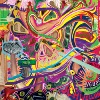 The latest from Dekorder label head Marc Richter's Black to Comm is a dense collection of multicolored cloudbursts, sizzling heat waves, and deep space pulsations. Running a Farfisa and Casio SK-5 through effects pedals, he sculpts moods rather than melodies, resulting in tracks that hover in the air at the expense of movement.
The latest from Dekorder label head Marc Richter's Black to Comm is a dense collection of multicolored cloudbursts, sizzling heat waves, and deep space pulsations. Running a Farfisa and Casio SK-5 through effects pedals, he sculpts moods rather than melodies, resulting in tracks that hover in the air at the expense of movement.
The album begins with its darkest track, "Negative Volumes." Warped, moaning voices and two alternating bass notes provide its foundation, with subtle keyboard sprinklings and more voices arriving to flesh it out. However, the bulk of these additional sounds are simply more of the same. The piano, trumpet, and violin that later enter the mix only reaffirm what the track has already accomplished and don't develop the idea any further. The track doesn't get more or less spooky; it stagnates. That's a fair description of how the other six pieces affected me as well and is what makes Fractal Hair Geometry such a frustrating experience.
Yet the sounds Richter comes up with are compelling. The body of "Orange Record" has a surprisingly emotional quality to it, like a precious but bittersweet epiphany, but merely adding more layers over the track's core serves a decorative rather than a musical function. "M.B. Memorial Building" is a majestic microtonal exploration that creates dynamic tension that unfortunately is only maintained, neither decreased nor heightened. The album's only obvious beat comes on the track "Leigh Bowery," which uses an unaccented 4/4 rhythm to punctuate the static shimmering sounds coming from the keyboards. It's a nice change, yet it still suffers from the same lack of progression as the others.
These tracks aren't bad by any means, if layered somewhat more thickly than necessary, but the problem is that each pieces shows nothing later on that hasn't already been learned or felt within the first 30 seconds. As an album, this gets old quickly, and to my ear makes these tracks better suited for gallery installations or soundtracks.
samples:
Read More
- Administrator
- Albums and Singles
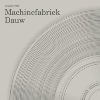 Rutger Zuydervelt's ever-prolific Machinefabriek has another new album this year, one that finds him incorporating a turntable into his hushed, sparse aesthetic alongside small melodies on guitar and piano. This, as well as other seemingly incidental sounds, gives the album much of its uniqueness.
Rutger Zuydervelt's ever-prolific Machinefabriek has another new album this year, one that finds him incorporating a turntable into his hushed, sparse aesthetic alongside small melodies on guitar and piano. This, as well as other seemingly incidental sounds, gives the album much of its uniqueness.
The turntable comes through most noticeably as the crackle and sputter found on old records, and sometimes its addition backfires by being distracting or even annoying. On "Engineer," it's used so prominently that it overshadows much of the delicate feedback before low end rumbles, guitar, and cymbals replace it. By the time this happens, however, the crackling has nearly ruined the track. There were some other sounds on the album that irked me, especially in the first few minutes of "Porselein." It begins with the plucking of a fragile melody on acoustic guitar, but unidentified clunks and static make it sound like a live sound check during which someone is fixing something or stumbling in the background. Other things that sound like microphone pops or short circuits in the wiring also give the track unnecessary blemishes. The bright drones and rhythmic clicking that appear later are nice but don't quite salvage the track.
Yet sometimes the incidental sounds work well. "Fonograaf" begins with an angelic motif that's aged by the crackling vinyl noise, as if it's some mysterious record by an unknown and forgotten composer found in a dusty attic. Its ending suggests a dying beauty as the melody fades and the crackle remains constant, broken up by a thunderstorm or a magnified and drawn out sample of the needle being clumsily withdrawn. Also excellent is the title track which begins as a crisp guitar melody but transforms into an eerily moving ghostly chorus by its end.
All of these devices are used in the album's fantastic epic closer "Singel," the basic track of which was recorded live earlier this year. It starts with a quiet hum and slight crackle before introducing minimal guitar pitches, slowly building into a noisier field with more incidental sounds appearing. The track continually grows in presence and power until it slowly fades into a quiet hum and crackle like it started, ending the album's strongest track symmetrically.
While I didn't like everything on Dauw equally, the good far outweighs the bad. Beautiful and sometimes even haunting, the better tracks could be artifacts of a lost time recently rediscovered.
samples:
Read More
- Matthew Amundsen
- Albums and Singles
Titles like "Surfin' U.S.S.R. 2 (Top Marx from the Serf Board!)," "Anyone Who Remembers Vladiwoodstock Wasn't There!," "The Dismantling of the Soviet Onion Made Us Cry," and "One Day, Son, All I Own Will Still Belong to the State" told me right away that this album was a single-minded affair. Unfortunately, the music comes across that way also. The first couple of songs, which include the title track and its sequel, have the most surf influence and are the easiest to listen to because the surf guitar differentiates them from the rest of the album. Too many of the others play up the Bulgarian folk traditions but are instrumentals that rely on the same tempos and rhythms again and again, making the music monotonous in the process.
Only a few songs are of interest, including a cover of Gerry and the Pacemakers' "Ferry Cross the Mersey" in Bulgarian complete with sweeping strings. "Dissident Harmony Sisters Camel Call" has some good female harmonies over a drum. These same singers reappear on the finale "Yagoda" alongside harp and tamboura. For me, they were the highlight of an otherwise forgettable album.
Maybe during the Cold War, this novelty schlock might have worked or at least had a more receptive audience. So far after the fact, however, it simply isn't very clever or captivating.
Read More
- Matthew Spencer
- Albums and Singles
Madoromi is a Japanese idiom that describes the state between waking and dreaming. It is a perfect description for the album's placid sound and languid pacing. Unfortunately, it's also good description for my response as a listener.
Water has a definite narcotic effect on me. Whether I've just spent an hour swimming, or a day at the coast, I always end up tired. Sawako's music produces a similar side-effect. Like sunlight reflecting off a lake, the sounds on Madoromi are bright but fleeting. They flash, then fade, then reappear in a delicate clockwork motion. In the notes, guitar and vibraphone are listed alongside "found memory" and "sleeping melancholy" as if those abstractions were a sound source too.
Madoromi succeeds in being peaceful and beautiful, but not much else. It lacks the vigor of waking life, but also the free association of dreams. A gravity is missing, as if a wave of the hands would scatter the music. After a few tracks, that beautiful, crystalline sound grows predicable and a little bit bland. A slight melody or shift in timbre would focus the composition, but the loops and samples just repeat, as if Sawako had walked away from her computer and went to bed. The arrangements are meant to be simple and understated, but end up being monotonous instead.
Read More